Garlic, Peppercorn & Cilantro Roots: The 3 Best Friends of Thai Cuisine
Enliven your cooking with an authentic Thai aroma – made with just 3 easy basic ingredients!
Discover the authentic in Asian cuisine food
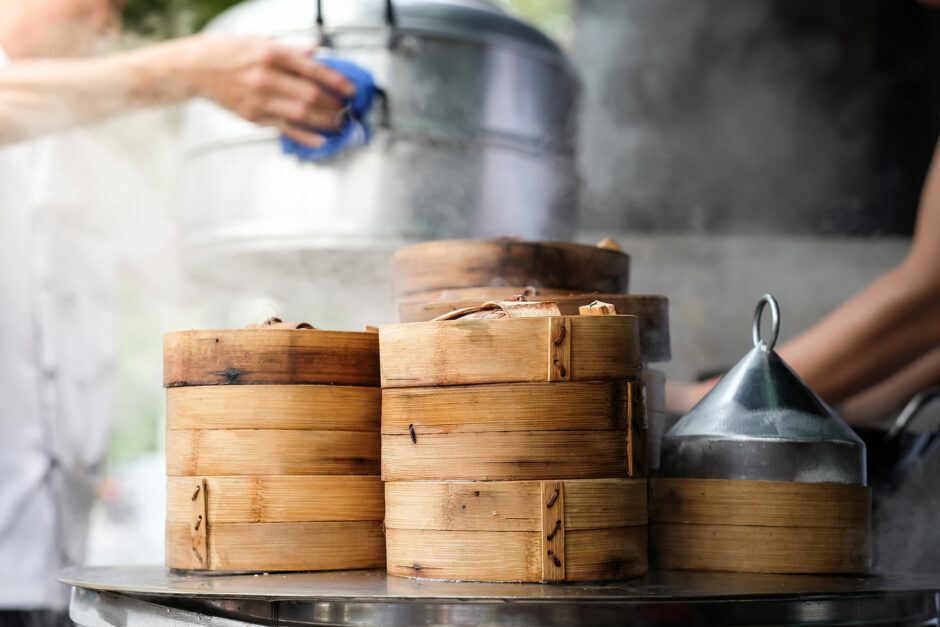
Steaming is a healthy and tasty way to cook. But like all methods of cooking, it’s important to do it properly. That means using the right equipment and the proper techniques. Flavour and flavour combinations are important, but if you don’t cook your food properly, it’s going to be well-seasoned mush.
There are 3 main tools used to steam food.

Bamboo steamers are readily available in Asian supermarkets, cooking industry supply stores (think Chef’s Hat, Sth Melbourne) and specialty food stores. You should be able to grab a good one for under $20. They’re also stackable, so if you buy a few, you can steam multiple dishes at once.

There’s not much “technique” involved with this one, just plug it in, choose your temperature and make sure you don’t overcook anything. Great for beginners.

Sort of a hybrid between a bamboo steamer and an electric, this is what western Mums and Dads have used to steam carrots for years. It gets the job done, but lacks the soul and romance of a bamboo steamer and the ease of an electric one.
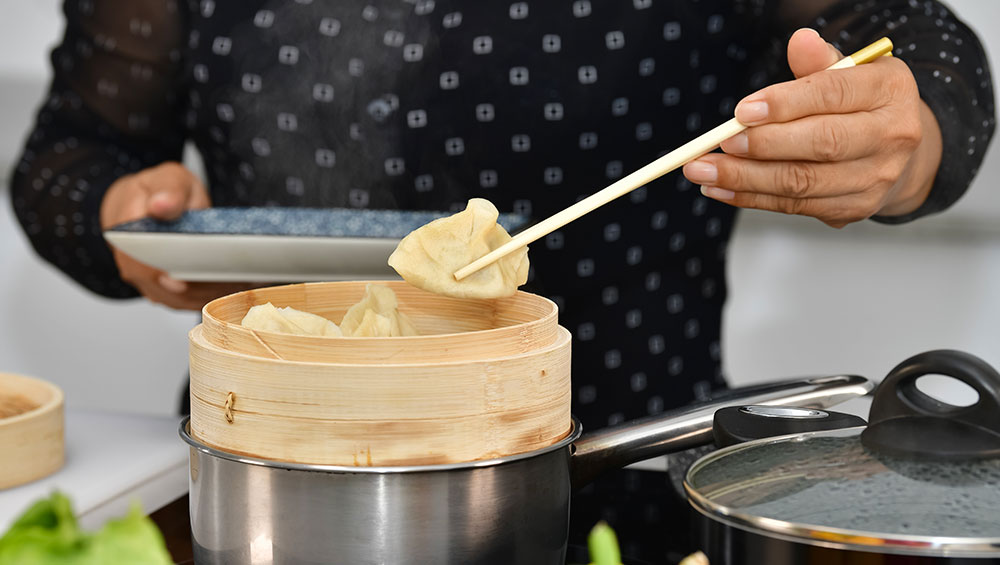
If you’ve never steamed before, you’ve come to the right place, because we’re about to show you how! And, seeing as we love traditional Asian food and culture, we’re going to use a bamboo steamer, because why do it any other way?
Step 1:
Fill the bottom of your pot with enough water (or broth/stock if you want more aromatic steam) so that it’s just kissing the bottom of the steamer. Remove the steamer, and bring the liquid to a boil. Once boiling, reduce the heat to a simmer.
Step 2:
Place your steamer stand (if using) or your steamer into the wok so that the simmering liquid is just touching the bottom. The food that takes the longest time to cook should be closer to the bottom. Stack as many tiers as you need then place the lid on top. Keep an eye on the level of liquid; you don’t want the wok to run dry.
Step 3:
Temperature control and timing are really important. You don’t want the steamer to get too hot or too cold, and you want to make sure the food is cooked through but not overcooked. It may take a bit of trial and error to get your meal absolutely perfect.
The beauty of the bamboo steamer is that you can simply place the open tiers into the middle of the table and let your guests serve themselves straight from them. Just like yum cha at home! If you’re steaming fish or meat and want to add a sauce, transfer your food to a serving plate or bowl before you do this, as the sauce will leak through the bottom of the bamboo steamer.
Make sure you clean each tier thoroughly and dry it in the open air. You don’t want the bamboo to grow mould.
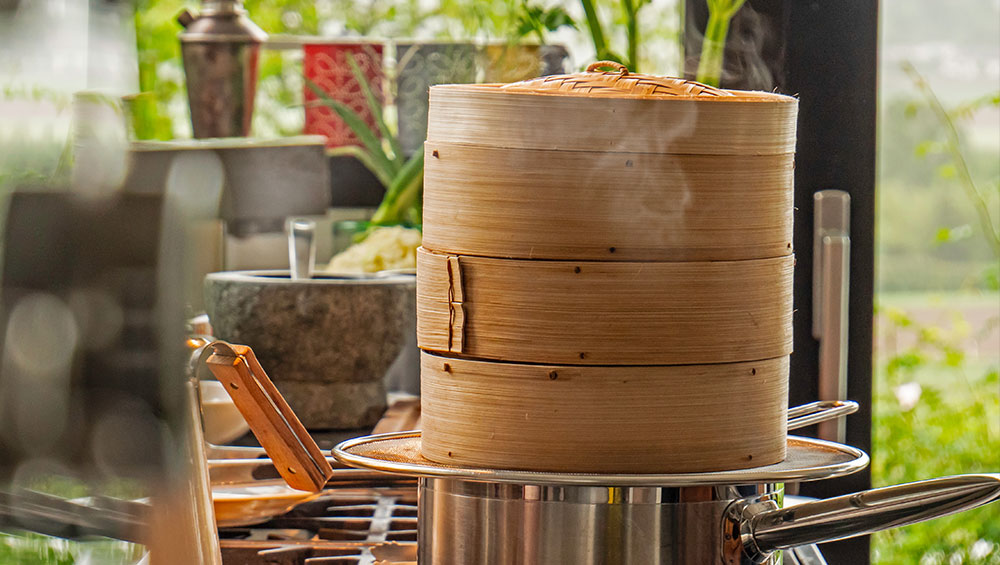
Now you’ve got the basics down, here’s some extra help that will take your steam game to the next level.
No Peeking!
Nothing to do with duck, this is all about leaving the lid on for the duration of your cook time. The more times you lift the lid, the more steam escapes, which affects the way your food cooks.
Temperature Control
I cannot stress this enough! Make sure the water is at a nice simmer, and not a rolling boil.
Trap that steam!
Cover your lid with a tea towel or wrap foil around the lip of the top tier to help trap as much steam as possible.

Dumplings
Buy some premade from your local dumpling house or whip up some like mum used to make. You can steam different dumplings on different tiers, and they generally take 15-20 minutes on medium heat. If you like them with a crispy bottom, fry your steamed dumplings in a tablespoon of oil over very high heat for 1-2 minutes or to your liking.
Meat
Works best with tender cuts that have been marinated. Steaming will keep the meat juicy and moist, but won’t break down sinew and fat, so stick to cuts like eye-fillet or pork loin.
Poultry
Steam whole or jointed, and, just like meat, make sure you’ve got a great marinade, broth or sauce to use after the steaming process.
Seafood
Steaming was made for seafood. Fish, prawns and shellfish are all delicious when steamed. Make sure you don’t overcook them though! There’s nothing worth it than dissolved fish fillet and leathery prawns.
Vegetables
Steaming locks in nutrients and keeps veggies crunchy and colourful. Again, be careful of overcooking.

If you think you’ve got this steamer thing covered, or you are desperate to give it a go but don’t have a steamer, well, now you can steam without a steamer!
Step 1:
Find a heat-proof/oven-proof plate.
Step 2:
Place 4 chopsticks in a tic-tac-toe/noughts & crosses pattern on the bottom of your wok or pan.
Step 3:
Place the plate on top of the chopsticks, and pour the liquid into the bottom of your pan, but not so much that anything is floating.
Step 4:
Cover your wok/pan with a lid, or with a large plate or bowl with a tea towel over the top.
There you have it! Your one-stop steam cheat sheet.
So, ready for some steamed wholesome flavours at home? Start off with the yum cha faves steamed roast pork buns, chewy savoury Lo Mai Kai, Siu Mai, delectable prawn dumplings, smooth and umami prawn rice rolls, and the classic soupy dumpling with flavours that burst in your mouth!
For meal dishes, savour a magnificent Thai steamed crab special, zesty tender eggplant, warm and comforting steamed egg, as well as the succulent flavour, texture and goodness of steamed fish with soy sauce.
For desserts, enjoy the sweet and creamy Bubur Cha Cha, cute and fragrant Kuih Pelita, chewy sweet treat Onde-onde, or indulge in the soft, velvety yumminess of Japanese pudding.
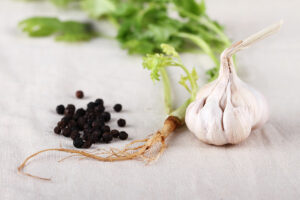
Enliven your cooking with an authentic Thai aroma – made with just 3 easy basic ingredients!

Treat your mum some amazing Asian specials this Mother’s Day!
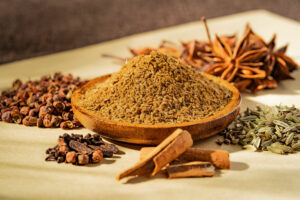
Come learn more about Chinese Five Spice Powder and how to use it!